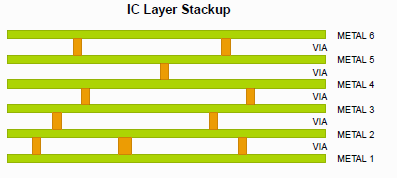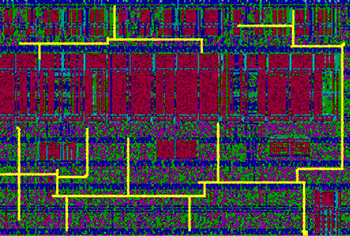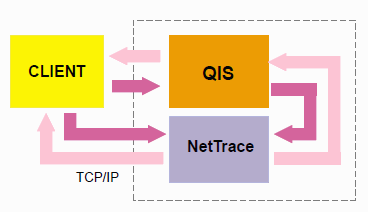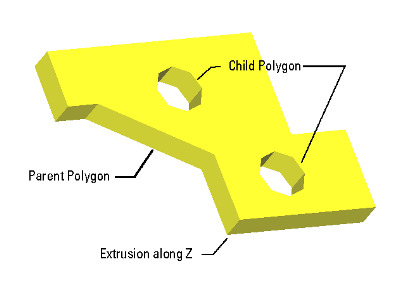
June 2005
Here is a quick summary of various products and ideas Artwork has been working on during the last year. If any of these are of interest, please contact us.
Table of Contents
| QIS | How over three years, QIS evolved from a image server into a general purpose OEM engine for large GDSII files ... |
||
| NetTrace | how to identify and trace nets (in real time) with just a GDSII file as the input data ... |
||
| OASIS | the next generation GDSII replacement has arrived intended to shrink those 50GB GDSII files down to 1GB. Are you ready yet? |
||
| Polygon De-Embedding | tired of editing and redrawing those those pesky AutoCAD derived masks that haven't been drawn "correctly... |
||
| STL2GDS | 3D MEMS design are often done using software that can't produce Gerber or GDSII. STL2GDS slices a 3D body to produce 2D GDSII/Gerber mask data... |
QIS (Qckvu Image Server)
Much more than just a GDSII image server.
Back in 2002 when we started work on QIS (Qckvu Image Server) we envisioned it as a way to develop WEB based viewers for large GDSII files. QIS would open the file on a powerful server, zoom in as instructed and return a bitmap of the window under inspection. A lightweight Java based client would handle the display on a PC or any other machine equipped with a WEB browser. (think of MapQuest but for IC mask data ...)

But that’s not how our customers saw it. The early adopters of QIS used it to drive their own GDSII viewers and data processors. QIS does the heavy lifting and the client software handled the display of bitmaps. We now have seven OEM users of QIS including: Synopsys, KLA Tencor, Applied Materials, Lite Enterprises, Credence, Fujitsu and Hitachi.
Boundaries and Paths are Nice ...
We added a vector (i.e. boundary/path) output to QIS which our customers found could be used to extract small regions from very large files for all types of analysis -- especially lithography simulation which takes so much computation that it is only run on a few critical areas. QIS made it easy to find these regions, get the geometries and start up the simulator.
Can I clip that for you?
Once we added the ability to extract all the polygons that crossed a given window one of our customers then asked -- “Could ya clip those polygons at the window boundary?” “Sure”, we said and added a boolean module to QIS. Of course, you can save the clipped region to a new GDSII file.
High Res Rasterizer
QIS had a built in rasterizer but because it was designed to drive a display screen it was limited to about 3000 x 3000 pixels. A company building wafer & mask inspection equipment needed a high resolution rasterizer that could produce 10,000 x 10,000 pixel images in order to compare the CAD data against windows acquired by the inspection cameras.We added a separate high resolution rasterizer and now several inspection machines have QIS embedded into their control software.
Push a few Polygons Around
Then a customer asked, “I just want to add and subtract a few polygons, and maybe I could create a new cell to hold them?” OK, we said and added basic editing functions to QIS.
Can I Get That in Linux?
Initially we figured QIS would run mostly on big Sun workstations. But then Linux showed up and AMD’s 64 bit Opteron chip did too.We soon released QIS running on 64 bit Opterons and recently added 64 bit Xeon’s and Pentiums under Suse 9.3
The Ankle Bone is Connected to the Knee Bone ..
“Gee, wouldn’t it be great if I could click on a polygon and see what is connected to it?” said one of our customers. “Sure” we said and then figured out that this is pretty tough to do on large files with a billion polygons. But that’s exactly what we are working on now. See the article on NetTrace for details ...




